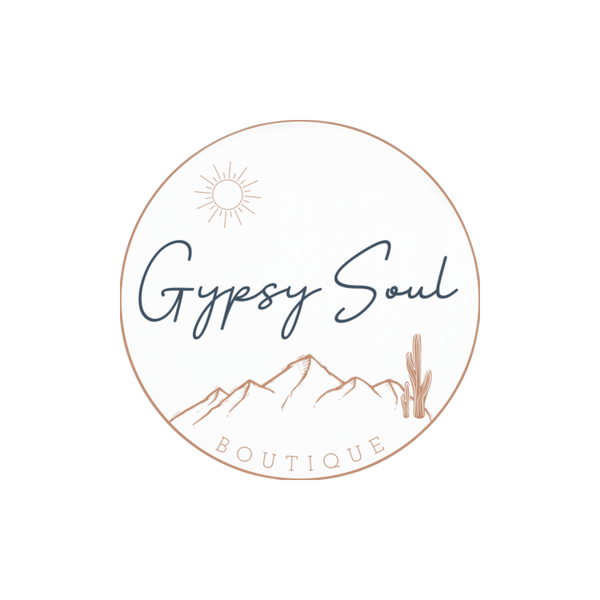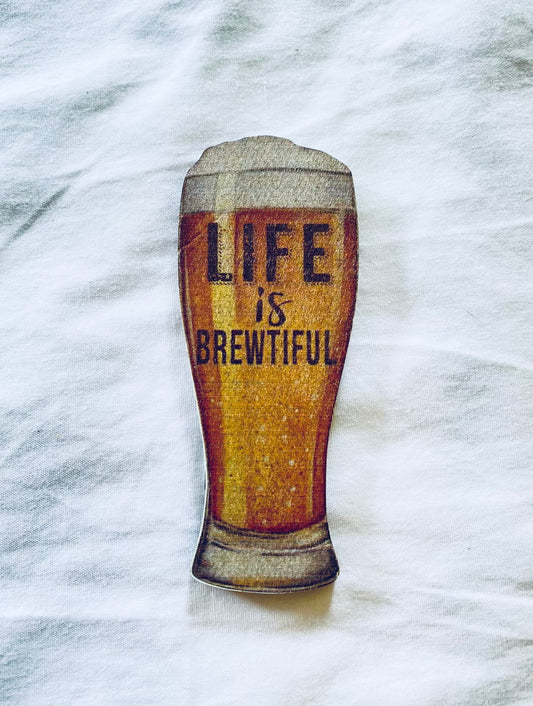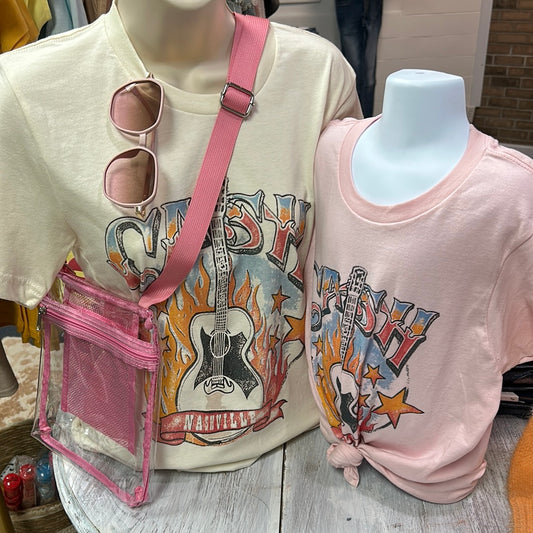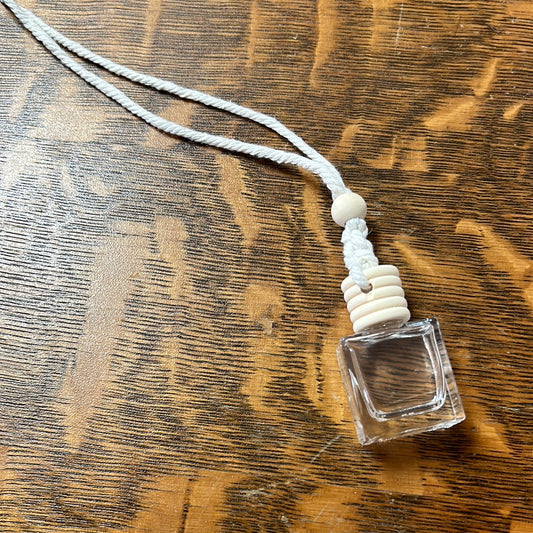
CHECK OUT OUR BOOTH!
4020 W Jefferson Blvd, Fort Wayne, IN 46804- Booth F8
Located in the Jefferson Pointe Shopping Mall next to Marshall’s
Open Daily 10-8

-
Imanes de cerveza
Precio habitual $2.50 USDPrecio habitualPrecio unitario / por -
Camiseta estampada MOMMY y Mini Retro Cash Nashville
Precio habitual $15.00 USDPrecio habitualPrecio unitario / por$29.00 USDPrecio de oferta $15.00 USDOferta -
Imanes de vino
Precio habitual $2.50 USDPrecio habitualPrecio unitario / por -
Agotado
Vela navideña de pueblo pequeño
Precio habitual A partir de $8.00 USDPrecio habitualPrecio unitario / por -
Difusor de coche- Biblioteca antigua
Precio habitual $12.89 USDPrecio habitualPrecio unitario / por -
Assorted Clay Fan Bracelets
Precio habitual $8.00 USDPrecio habitualPrecio unitario / por -

 Oferta
OfertaJackie Fleece Crewneck
Precio habitual $25.00 USDPrecio habitualPrecio unitario / por$28.99 USDPrecio de oferta $25.00 USDOferta -
Rhinestone Hair Clips
Precio habitual $8.49 USDPrecio habitualPrecio unitario / por -
 Agotado
AgotadoVela de capuchino moca y menta
Precio habitual A partir de $8.00 USDPrecio habitualPrecio unitario / por -
Agotado
Vela Reyes Magos
Precio habitual A partir de $8.00 USDPrecio habitualPrecio unitario / por -
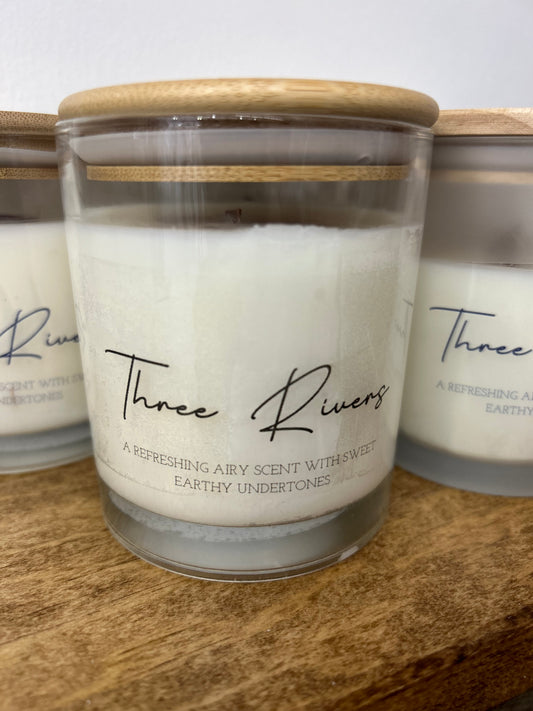 Agotado
AgotadoVela Tres Ríos
Precio habitual A partir de $8.00 USDPrecio habitualPrecio unitario / por -
Botines Whitney
Precio habitual $34.00 USDPrecio habitualPrecio unitario / por -
Difusor para Coche - Vainilla Caramelizada
Precio habitual $12.89 USDPrecio habitualPrecio unitario / por -
Vela Up My Allie Jar: manzanas rociadas con caramelo
Precio habitual $12.00 USDPrecio habitualPrecio unitario / por -
Cuencos decorativos de madera para masa
Precio habitual $15.00 USDPrecio habitualPrecio unitario / por -

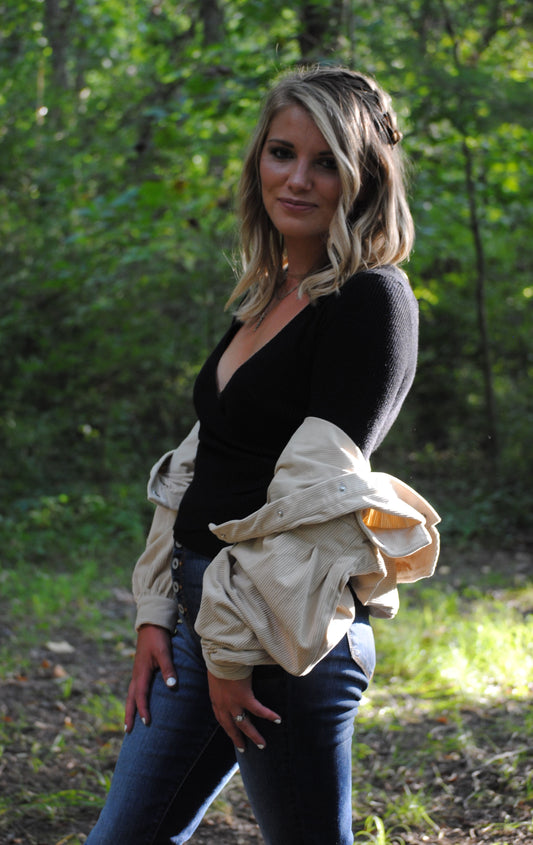 Oferta
OfertaSuéter acanalado superior
Precio habitual $16.00 USDPrecio habitualPrecio unitario / por$32.00 USDPrecio de oferta $16.00 USDOferta -
Camiseta para hombre Love Like Jesus
Precio habitual $29.00 USDPrecio habitualPrecio unitario / por -
Electric Lighter
Precio habitual $12.99 USDPrecio habitualPrecio unitario / por -
Jackie Fleece Joggers With Pockets
Precio habitual $25.00 USDPrecio habitualPrecio unitario / por$28.99 USDPrecio de oferta $25.00 USDOferta -
Clip de garra en zigzag
Precio habitual $7.00 USDPrecio habitualPrecio unitario / por -
Difusor de coche - Mañana de Navidad
Precio habitual $12.89 USDPrecio habitualPrecio unitario / por -
Difusor de Coche - Capuchino Moca Menta
Precio habitual $7.00 USDPrecio habitualPrecio unitario / por$12.89 USDPrecio de oferta $7.00 USDAgotado -

 Agotado
AgotadoDifusor para Coche- Reyes Magos
Precio habitual $12.89 USDPrecio habitualPrecio unitario / por -
Difusor para Coche- Higos Caramelizados
Precio habitual $12.89 USDPrecio habitualPrecio unitario / por -
Difusor para coche - Crema de vainilla Cold Brew
Precio habitual $12.89 USDPrecio habitualPrecio unitario / por
FORT WAYNE, INDIANA
The second largest city in Indiana featuring a charming and vibrant city that blends small-town warmth with the amenities and opportunities of a larger urban area. The unique mix of cultural, historical, and modern attractions, makes it a dynamic place to live, work, and visit. Whether you're interested in exploring its parks and rivers, diving into its cultural scene, or enjoying a quiet, affordable life, Fort Wayne has something for everyone. With a growing economy, family-friendly atmosphere, and a focus on community, Fort Wayne is a city that combines the best of both worlds.We at Gypsy Soul Boutique are thrilled that Painted Tree has opened its doors in this community and that we get to be a part of both!
The Fort
Fort Wayne, has a rich military history dating back to the 18th century, centered around the establishment of several forts during times of conflict.
The history of the fort in Fort Wayne begins with the construction of Fort Wayne itself, a key military site located at the confluence of the St. Joseph, St. Mary's, and Maumee Rivers.
The first military presence in the area was not Fort Wayne, but Fort Miamis, which was established by the British in 1794 during their efforts to control the region after the American Revolution. Fort Miamis was located on the site of the future Fort Wayne and served as a defensive stronghold for the British. After the British withdrawal from the region following the Treaty of Paris in 1794, Fort Miamis fell into disrepair.
Fort Wayne was officially built in 1815, during the post-War of 1812 era, when the United States sought to strengthen its defense on the western frontier. The fort was constructed on the former site of Fort Miamis by the U.S. Army as part of a broader strategy to secure the western territories against potential Native American resistance and British influence.
The new Fort Wayne was a stockade-style military fortification designed to protect settlers and maintain control over the region. Its location was strategic, as it stood at the junction of three rivers, making it a key position for transportation and trade.
Though the fort was not heavily involved in combat during the War of 1812, it played a significant role in the aftermath, helping to secure the region from further Native American resistance. It also served as a supply depot for U.S. forces operating in the region.
In the decades that followed, Fort Wayne continued to serve as a key military post during conflicts with Native American tribes, particularly in the 1830s and 1840s during the period of forced removal and relocation, including the Trail of Tears.
Fort Wayne was decommissioned in 1854 as the frontier began to settle and military needs in the area decreased. The fort's buildings were dismantled, but its legacy continued. The area around the fort gradually developed into the city of Fort Wayne, which grew into an important industrial and transportation hub during the 19th and 20th centuries.
Today, there is a Fort Wayne Historic Site in the city, which includes reconstructions of parts of the original fort. The site educates the public about the history of the fort and its role in the broader history of the region, including Native American relations, military history, and the early development of the city.
Fort Wayne's history is an integral part of the city's identity and is a testament to the military and cultural developments of the early United States.
Experience the alluring scent of the Old Fort. Transport yourself to those rugged days with one of our signature Fort Wayne inspired scents “Old Fort”. Whether you choose a candle, wax melts, room spray, or car diffuser, you’ll be taken back by the bold, musky, spicy, and woodsy notes that create a uniquely sensual and old timey aroma.
Three Rivers
Fort Wayne is uniquely positioned at the confluence of three rivers, which have played a significant role in the city’s history, development, and identity. These three rivers are the St. Joseph River, St. Mary’s, and Maumee River.
The St. Joseph River originates in Michigan, flowing southward into Indiana. It is the longest of the three rivers converging in Fort Wayne, with a length of around 210 miles. The river flows through northeastern Indiana, eventually merging with the St. Mary’s River in Fort Wayne to form the Maumee River. The St. Joseph River has historically been an important waterway for trade and transportation, and its fertile surrounding land supported the development of early communities. Today, it plays a key role in the region's recreation, with opportunities for boating, fishing, and other outdoor activities.
The St. Mary’s River starts in Ohio and flows southwest into Indiana, converging with the St. Joseph River in Fort Wayne. It is about 150 miles long. Like the St. Joseph River, it has served as a significant route for early settlers and traders. The river was particularly important during the 19th century for transporting goods and materials, especially as the region became a hub for industry and commerce. The riverbanks have also been developed for public enjoyment, including parks and walking trails along the water.
The Maumee River is formed by the confluence of the St. Joseph and St. Mary’s Rivers in Fort Wayne. From here, the Maumee flows westward through Indiana and Ohio, eventually emptying into Lake Erie. The Maumee River is crucial for transportation and commerce and has been historically significant for the region's development. The river’s basin has been used for agriculture, and it continues to be a resource for the surrounding communities in terms of water supply and recreation. The Maumee also has a cultural and historical importance for Native American tribes, who lived along its shores long before European settlers arrived.
The location at the intersection of these three rivers is a key reason why Fort Wayne became an important settlement and military post in the early years of the United States. The rivers provided transportation routes, water for agriculture and industry, and access to valuable trade networks. Fort Wayne’s strategic position at the confluence allowed it to grow as a major transportation hub, both for shipping goods and for establishing infrastructure like railroads.
The rivers today are a central part of Fort Wayne's landscape and continue to shape its identity.
Indulge your senses and try our airy “Three Rivers” scent. With sweet earthy undertones, this scent creates a sensual and relaxing atmosphere that reminds you of a rainy day along the River. Available in candles, wax melts, rooms sprays, and car diffusers.
City of Churches
Due to the large number of churches and religious institutions that developed in the city, particularly during the 19th and early 20th centuries, Fort Wayne became known as the "City of Churches".
The city's deep religious roots and a strong sense of community have contributed to its reputation as a center for Christian faith and worship.
The early settlers in Fort Wayne, many of whom were of European descent, brought their religious traditions with them. As these communities grew, the need for places of worship also increased. The first churches in Fort Wayne were small and modest, but as the city grew, so did the religious infrastructure.
German Catholics and Lutherans played an especially significant role in building churches.
As settlers moved westward, establishing a new life in Fort Wayne, they often saw church membership as an essential part of their community and moral foundation. Religious institutions were among the first buildings constructed in new neighborhoods.
Churches often acted as community centers, offering more than just a place for worship. They were places for social gatherings, charity events, and education, making them central to the development of the community.
Fort Wayne was home to many different denominations, from Catholic and Lutheran to Methodist, Baptist, and Presbyterian churches. This diversity of religious institutions contributed to the city's identity as a “City of Churches.”
The city’s reputation was further solidified by its collection of remarkable church buildings. Many of these churches are known for their grand architecture, often incorporating Gothic, Romanesque, and other classical styles. Fort Wayne's churches, particularly those built in the late 19th and early 20th centuries, feature stunning stained-glass windows, intricate woodwork, and soaring spires, making them an integral part of the city’s landscape.
Though Fort Wayne’s growth has changed over time, the tradition of strong religious presence has continued. Today, the city is home to over 100 churches, and the city’s historic churches remain important landmarks, contributing to Fort Wayne’s cultural and historical fabric. The city’s commitment to religious diversity and its early history of church building have earned it it’s affectionate title.
We offer many faith based items to not only represent the deep religious roots of Fort Wayne but also our own personal faith as well.
Music
Fort Wayne, Indiana, has a growing and vibrant music scene that reflects the city’s diverse cultural influences and community spirit. While not as widely known for its music industry as larger cities, Fort Wayne has become an important hub for local musicians, bands, and music enthusiasts. The city offers opportunities for both established artists and emerging talent, blending a rich history of music with contemporary styles and venues.
Fort Wayne is home to a variety of venues that support live music, from intimate acoustic performances to larger concerts and festivals. These venues are crucial in fostering a dynamic music scene, allowing artists to connect with local audiences.
One of the city's most iconic venues, The Embassy Theatre, is a beautifully restored historic theater that hosts a range of live performances, including concerts by national acts, musicals, and symphony performances. It is home to the Fort Wayne Philharmonic, and its grand atmosphere makes it a staple for major music events in the city.
Another major venue for live music is the Clyde Theatre, a historic venue that has been revitalized in recent years. It has become a popular spot for rock concerts, indie performances, and country acts, offering a larger space for fans to enjoy performances by both big-name and local artists.
Known for hosting a variety of live events, Piere’s is a long-standing venue in Fort Wayne’s music scene. It has been a hotspot for DJ events, metal, rock, and electronic music performances, catering to a wide range of music lovers.
For those seeking a more intimate music experience, The Brass Rail is a beloved spot known for live performances by local bands and regional acts, ranging from rock to blues and punk.
Fort Wayne hosts a number of music festivals and events throughout the year, drawing music lovers from all over the region.
One of the city’s biggest and most anticipated events, the Three Rivers Festival celebrates Fort Wayne’s cultural diversity with live performances across multiple genres. It’s a major event that highlights both local talent and national touring acts.
Held annually in downtown Fort Wayne, the Taste of the Arts Festival celebrates the arts in all forms, including music, dance, theater, and visual arts. The festival features local musicians and bands, giving them the chance to perform and connect with the community.
The Fort Wayne Music Festival is another important event that showcases a wide range of local musical talent, from indie rock to folk and hip-hop. It’s an opportunity for Fort Wayne residents to enjoy a variety of music and support the city’s growing music scene.
Fort Wayne has a strong local music community that includes musicians, songwriters, and performers in a variety of genres. The city supports a thriving local music scene, with opportunities for both aspiring and professional artists to perform, collaborate, and grow.
There are several well-known local bands and solo artists from Fort Wayne who have contributed to the city’s music culture. For instance, bands like The Lucky 5 and The Duskwhales have gained recognition both locally and beyond. Many Fort Wayne musicians perform regularly at local venues or collaborate with other artists in the region, helping foster a tight-knit and supportive community.
Fort Wayne’s music community also includes the Fort Wayne Music Hub, a grassroots organization that helps support local artists and musicians. They provide resources for musicians to learn, grow, and perform while connecting them with the wider regional music industry.
Fort Wayne is home to several institutions that support music education and nurture young talent.
IPFW has a well-regarded School of Music that offers undergraduate and graduate programs in music performance, education, and composition. The university provides training and performance opportunities for emerging musicians and plays an important role in fostering the city’s music community.
The Fort Wayne Philharmonic is a key player in the city’s music landscape, offering classical music performances and educational programs. The Philharmonic plays a vital role in enriching the local cultural scene and providing opportunities for musicians of all ages to develop their skills.
For younger musicians, the Fort Wayne Music Center offers lessons and programs for students of all ages. It serves as a hub for music education in the community, offering private lessons, group classes, and opportunities to perform.
Sweetwater Sound, headquartered in Fort Wayne, is the largest online retailer of musical instruments and pro audio equipment in the United States. Founded in 1979 by Chuck Surack, the company has evolved from a home-based recording studio to a comprehensive music technology enterprise.
Sweetwater's expansive campus in Fort Wayne features a state-of-the-art retail store spanning 44,000 square feet. This store offers a vast selection of musical instruments and gear, including guitars, keyboards, drums, and more. Customers can explore various themed rooms dedicated to different instrument categories, providing a hands-on experience with a wide range of products.
Adjacent to the retail store is the Sweetwater Performance Pavilion, a covered outdoor venue that hosts concerts and events. The pavilion features a state-of-the-art sound system custom-designed by Sweetwater.
Visitors can enjoy world-class recording studios, music lessons, artist workshops, live concerts, and more, making Sweetwater a premier destination for music enthusiasts.
While Fort Wayne’s music industry is not as large as those in major metropolitan areas, it still offers significant opportunities for growth. The city has an increasing number of music-related businesses, including recording studios, event promoters, and sound engineers, which are helping build a more professional infrastructure for the local music scene.
Fort Wayne has several radio stations and media outlets that help promote local music and support the music industry. Stations like WBOI 89.1, 101.7 The Point, and Rock 104 provide a platform for local bands to get their music heard by a wider audience. Many of these stations also host live performances and events featuring local artists.
The music scene in Fort Wayne is closely connected with the city’s overall arts community. Local musicians often collaborate with visual artists, dancers, and theater performers, blending different forms of creative expression. Organizations like The Fort Wayne Artists Guild and Artlink promote collaboration between music and other artistic mediums, enriching the cultural fabric of the city.
Gas
The birthplace of the modern-day gas pump can be traced back to Fort Wayne, where the very first mechanical gas pump was invented in 1885 by George Garrett. Garrett, a local mechanic and entrepreneur, is credited with developing the world's first "modern" gas pump, which was a significant advancement over earlier methods of dispensing fuel.
Before Garrett's invention, gasoline was sold in bulk, stored in barrels or containers, and dispensed manually from those containers. There were no pumps to control the flow of fuel, and it was often a messy and inefficient process. Fuel was typically dispensed into customers' containers by hand, and there was no standardized way to measure how much fuel was being sold.
Garrett built the first mechanical pump capable of dispensing gasoline and measuring it. This pump had a hand-operated lever and a measuring mechanism that allowed the seller to determine the exact amount of gasoline being dispensed. This innovation made buying gas more efficient, accurate, and clean compared to the previous methods.
Garrett's pump was a breakthrough because it allowed customers to know exactly how much gasoline they were purchasing and how much it would cost. Garrett's pump was manually operated and used a mechanical meter to measure the flow of fuel, ensuring that the customer was charged for the right amount.
Garrett's invention was a key milestone in the development of modern refueling infrastructure. The pump improved the speed, accuracy, and convenience of gasoline dispensing, helping to lay the foundation for the modern-day fuel pump that we use today.
The invention of the gas pump in Fort Wayne revolutionized the way gasoline was sold and dispensed, and it played an important role in the growth of the automobile industry in the early 20th century. As cars became more common, the demand for gasoline grew, and the development of efficient fuel pumps was crucial in meeting that demand.
While Garrett's mechanical pump was a significant step forward, it was further refined and improved upon over the decades. By the 1920s, automatic fuel pumps were developed, and by the 1940s, electric pumps with digital meters and automatic shut-off mechanisms were introduced. However, Garrett's initial mechanical pump remains an important innovation in the history of fueling technology.
Small Town Vibes
Fort Wayne has managed to preserve a small-town vibe despite being the second-largest city in the state.
Fort Wayne is known for its sense of community. Residents tend to feel a strong connection to their neighborhoods, and there is a high level of civic involvement. The city hosts many local events, festivals, and community gatherings, such as the Three Rivers Festival and Johnny Appleseed Festival, which encourage interaction and bonding among residents. There's also a focus on volunteering and supporting local organizations, creating a collaborative atmosphere similar to that found in smaller towns.
Despite its size, Fort Wayne's downtown area remains highly walkable, with a mix of businesses, restaurants, parks, and residential spaces. This pedestrian-friendly environment fosters a sense of accessibility and connectedness. The walkable downtown encourages face-to-face interaction, whether through dining out, shopping locally, or attending events, giving people the chance to engage with each other in ways that might be more difficult in larger, sprawling cities.
Fort Wayne is divided into several unique neighborhoods, each with its own identity and sense of community. Many of these neighborhoods have a small-town feel with tree-lined streets, local businesses, and well-maintained parks. The city’s neighborhoods are often tightly knit, where people know their neighbors, creating a familiar atmosphere. Local businesses thrive in these areas, reinforcing the sense of a small town within a larger city.
While Fort Wayne has modernized over the years, it has done so while maintaining much of its historic charm. The city has worked to preserve and restore historic buildings, especially in the downtown area, which retains much of its early 20th-century architecture. The presence of these historic structures adds character and a sense of timelessness to the city, making it feel more like a close-knit, traditional town.
Fort Wayne has a remarkable system of parks and trails, including the Rivergreenway which connects various parks and areas along the three rivers. The city's commitment to green spaces gives residents ample opportunities for outdoor recreation, such as hiking, biking, and attending events. Parks and outdoor spaces often serve as gathering places, helping maintain the feeling of community. These spaces allow for the kind of slower, more relaxed lifestyle often associated with rural or small-town living.
One of the defining features of Fort Wayne is its affordable cost of living. Housing prices, property taxes, and general living expenses are much lower than in larger cities, making Fort Wayne an attractive place for families and individuals seeking a more relaxed lifestyle. This affordability enables people to enjoy a higher quality of life with more space. Residents can enjoy suburban-style living without giving up the conveniences of city life.
Fort Wayne is home to many locally owned businesses including those of us here in Painted Tree, from restaurants and cafes to retail stores and breweries. The city's support for local entrepreneurs gives it a distinctive identity and keeps the economic focus grounded in the community. This is in contrast to larger cities, where big corporations dominate the marketplace. The presence of local businesses also encourages a culture of friendly, personal service.
Fort Wayne benefits from its location at the confluence of three rivers, offering easy access to outdoor activities and natural beauty. The rivers, parks, and nearby nature reserves give residents the ability to enjoy the peaceful surroundings of nature without having to travel far, creating a sense of balance between urban and rural lifestyles.
Fort Wayne’s local media outlets, including television, radio, and print media, tend to focus on community stories, local events, and issues that directly impact the residents. This local focus helps create a sense of shared identity and familiarity. People in Fort Wayne often feel connected to what’s happening in their neighborhoods and across the city.
While Fort Wayne is an urban center, its pace of life is much slower compared to larger cities. Traffic is manageable, and people don’t face the same hectic pace that might come with living in a larger metropolitan area. This slower pace makes daily life more relaxed and allows residents to enjoy a greater sense of tranquility.
Fort Wayne is a city where family-oriented values are at the forefront. Many events and activities are centered around families, and there is a strong emphasis on education and community programs for children. Churches, community centers, and local organizations play an important role in people’s lives, fostering a sense of connection and stability.
You may not think of corn fields when you think of a bigger city, but for some that may actually come to mind when they think of Fort Wayne. The sweet grassy notes of our signature scent “Sweet Corn” will transport you to your sweetest memories in Indiana corn fields. Whether those memories are in Fort Wayne or another small town of Indiana, you can bring the comforting feeling of home to your space with this unique, one of a kind fragrance available in candles, wax melts, room sprays, and car diffusers.
Coffee
Coffee in Fort Wayne is more than just a morning ritual—it's become a part of the city's culture and community. The city's thriving coffee scene offers everything from cozy, locally-owned cafes to artisanal roasters, making it a destination for coffee lovers.
Fort Wayne is home to a wide range of independent coffee shops that have become beloved staples in the community. These local spots offer a personalized coffee experience, often roasting their own beans and providing unique blends and flavors. Some of the standout local coffee shops include:
•The Bluebird Coffee Shop
Known for its relaxed atmosphere, it is a favorite in the heart of downtown Fort Wayne. It offers a variety of espresso-based drinks, pour-overs, and iced beverages. The shop is known for its focus on quality, local ingredients, and its cozy, artsy vibe.
•Powers & Sons Coffee
As one of the city's newer additions to the coffee scene, Powers & Sons Coffee specializes in carefully sourced beans and serves up delicious espresso drinks, pour-overs, and cold brew. The shop prides itself on both the quality of its products and its community-focused environment, making it a great spot for coffee lovers looking for something new.
•Café of Hope
A non-profit café with a mission to support local initiatives, Café of Hope is another local gem. It offers great coffee in a welcoming space, where patrons can enjoy their drinks while contributing to a good cause. The café provides a variety of coffee drinks along with baked goods, making it a popular spot for people who appreciate community-focused businesses.
•Artisanal Roasters
Fort Wayne has also become home to several artisanal roasters who take pride in crafting high-quality, ethically sourced coffee. These roasters supply local cafes with fresh beans and often offer their products directly to consumers. Some of the noteworthy roasters include:
•Mad Anthony Coffee
They have earned a reputation for being one of the most well-regarded roasters in Fort Wayne. Offering a wide selection of blends and single-origin coffees, Mad Anthony is known for its commitment to high-quality beans, as well as its dedication to sustainable and ethical sourcing. They sell their coffee at local cafes and offer it for sale directly to consumers.
•One Lucky Guitar Coffee
Not just a roaster, but a part of Fort Wayne’s artistic community, One Lucky Guitar Coffee is tied to the creative hub of One Lucky Guitar, an agency known for its music and art connections. Their coffee is freshly roasted, and they offer a cozy atmosphere where you can sip on excellent coffee while listening to music or browsing local art.
In addition to the usual espresso drinks, many Fort Wayne coffee shops serve up unique specialty drinks that reflect the local flavor and creativity. Some places offer seasonal beverages, like pumpkin spice lattes in the fall or refreshing iced coffees and cold brews in the summer. Local cafes like The Bluebird Coffee Shop are also known for offering creative twists on classics, such as craft lattes made with local syrups or specialty coffee cocktails.
Coffee culture in Fort Wayne is very much tied to the city’s sense of community. Many of the coffee shops in town are hubs for people to gather, relax, and build relationships. Whether it’s a local business owner meeting a client over coffee or a group of friends catching up on a Saturday morning, Fort Wayne’s coffee shops often serve as gathering places for the community to connect.
Additionally, events like coffee cupping sessions (where participants taste and evaluate different coffee beans) and latte art competitions bring people together to appreciate the craft of coffee in a fun, interactive way. These types of events help foster a sense of camaraderie and enthusiasm around the coffee culture in Fort Wayne.
Fort Wayne’s coffee culture also emphasizes sustainability. Many local coffee shops and roasters make an effort to offer organic, fair-trade, and locally sourced products. This not only ensures the quality of the coffee but also reflects a growing awareness of environmental and social responsibility within the community. Some places, like The Coffee Hub focus on providing eco-friendly options like biodegradable cups and lids, while also partnering with sustainable coffee bean producers.
Fort Wayne hosts events that celebrate the city's coffee culture, further strengthening the connection between coffee and the local community. These events often feature tastings, brewing demonstrations, and workshops. The Fort Wayne Coffee Festival is a notable event where local roasters and coffee shops come together to showcase their best offerings. It’s a perfect opportunity for coffee enthusiasts to sample different varieties, learn about brewing techniques, and connect with others who share their passion for coffee.
In a city with a thriving arts scene, coffee shops often play a role as venues for local artists to showcase their work. Whether it’s hosting art shows, live music, or poetry readings, places like The Bluebird Coffee Shop and The Brass Rail regularly feature events that bring the city's artistic and coffee cultures together. This unique fusion adds another layer to the city's love of coffee, making it a place where creativity and caffeinated energy flow freely.
Bring the aromatic scent of coffee home with you. We offer a variety of coffee inspired scents for you to choose from. Vanilla cream cold brew, French praline espresso, Pumpkin cappuccino, and Peppermint mocha cappuccino are some of our signature coffee scents available in candles, wax melts, rooms sprays, and car diffusers.
